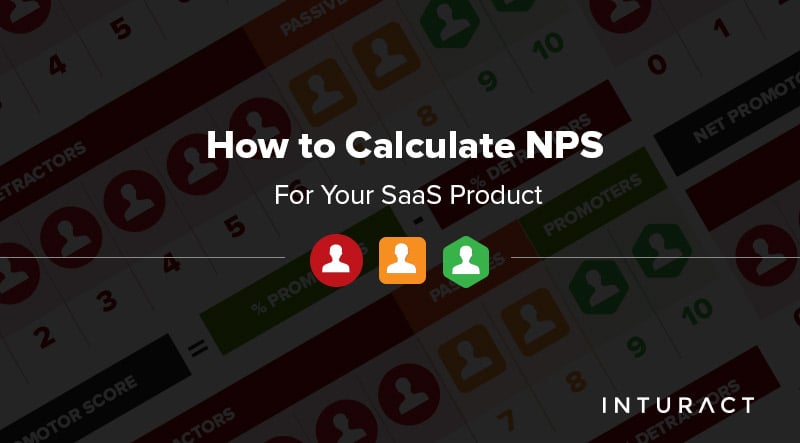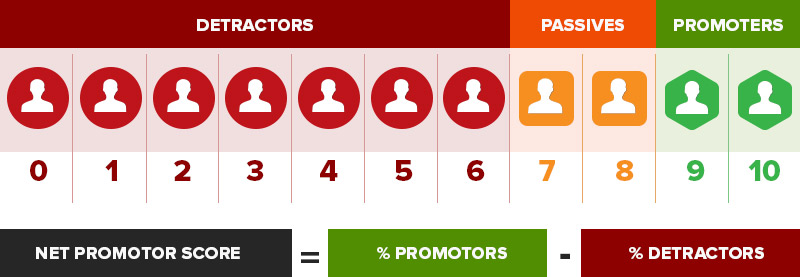 If you're in the SaaS business, then one metric that you must consider to assess the success of your product is the Net Promoter Score (NPS). It's become an industry benchmark for customer satisfaction - and satisfied customers mean a healthy company.
If you're in the SaaS business, then one metric that you must consider to assess the success of your product is the Net Promoter Score (NPS). It's become an industry benchmark for customer satisfaction - and satisfied customers mean a healthy company.
So what exactly is the NPS, how do you calculate it and how can you use it to figure out if your Customer Success and SaaS marketing are working? Here are some tips.
A Brief History of NPS
First, a bit of history. Originally, the NPS wasn't about Customer Success or SaaS marketing at all. It emerged from a research project which wanted to find out how customers related to a particular company, since successful customers are a prerequisite for growth.
After a bit of tweaking, the research project found that there is one key question you could ask your customers that was a good predictor of their future behavior. That question is: "what is the likelihood that you would recommend this company to a friend or colleague?"
This simple question packs a lot of power, as the Net Promoter site reveals: "High scores on this question correlated strongly with repurchases, referrals and other actions that contribute to a company’s growth." It's no wonder that Frederick F. Reichheld calls NPS "the one number you need to grow".
How to Work Out Your NPS
All responses to the question are scored along a continuum between 0 and 10, with 10 being most likely to recommend you and 0, obviously, least likely. It works like this:
-
People who answer this question with a score of 9 to 10 are "promoters" who are usually loyal to your company, brand and product and are happy to recommend you to others.
-
Those scoring you between 7 and 8 are "passives", who may like your product, but don't feel strongly about it.
-
Those scoring your company 6 or less are "detractors", who don't like your product or company that much.
To work out your NPS, divide customer response into three buckets, then work out the percentage of each as a proportion of the whole. Next, subtract the percentage of detractors from the percentage of promoters. See the example of the Startup Lessons Learned site:

Once you've done that, see how your SaaS compares with other industries by using industry benchmarks such as those available on the NPS benchmarks website, where you can check out your industry, your competitors and even search by tag.
What's a good NPS? It's kind of hard to tell, because industry averages can be low. However, the best companies hugely outperform their industries. For example, in the retail sector, the average is 28, while Amazon's score is 64. And if you're talking consumer brands, Tesla has an NPS of 96.6. Use the top companies as inspiration to figure out what to do with your SaaS marketing.
How to Get Meaningful Data From Your NPS Survey
While the simple NPS survey will give you some data, you can make it even more meaningful with a follow-up question. And the best question to ask is: "why did you choose that score?" That's because it's the question which is most likely to give you usable data on how people really feel about your SaaS product.
The answers to that question will help you understand what makes your customers become promoters or detractors. And with more analysis, you can link that to other behavior they exhibit on your website so you know what you might need to change to make more customers happier.
Keep your questions consistent over time, and avoid the temptation to add more questions to the survey. The more you ask, the less likely you are to get a response. It's important to track responses to these questions so that you have a good sense of whether things are changing over time. For example, Asana's product manager checks NPS data daily.
Ideally, you're looking to have significantly more promoters than detractors. If you're in negative equity, with more detractors than promoters, then you have a serious problem that will inhibit growth in the medium and long term.
Wootric recommends in-app NPS surveys. That's because it improves your response rate and lets you know exactly what customers are responding to. Wootric also recommends running the survey often.
The great thing about NPS is that it allows you to track your customer relationships and truly know whether they are happy. You can track this as a whole, or for particular parts of your company.
Benefits of NPS for SaaS Marketing
Knowing your NPS will help your business to grow.
-
65% of new business is driven by referrals.
-
People are four times as likely to buy from you when a friend refers the company.
-
Referral customers have a 16% higher lifetime value.
In other words, your NPS is a good measure of how successful your business will be in keeping customers coming in.
The great thing about NPS is that it's totally customer driven. When you track it over time and see what causes fluctuating scores, you can move into a cycle of continuous improvement where you quickly respond to any issues that affect your customers. This is good for long-term growth.
It's good for the bottom line, too. Satmetrix says improving your NPS gives you more revenue, more profit and cuts the cost of serving your customers.
NPS scores can be a powerful tool for energizing the whole company culture, as Slack CMO Bill Macaitis points out. Among other things, Slack uses NPS to inform decisions on marketing channels and product updates.
To get even more from NPS, put the scores into context with other customer information so you can see if there's a distinction between customers using different versions of your product. For example, are freemium customers as happy as enterprise customers? Which group is more likely to recommend you? Getting this data will help you take action on NPS to position your company for better customer satisfaction and higher growth.
What is the NPS for your software as a service company? What have you done to improve it over time?



